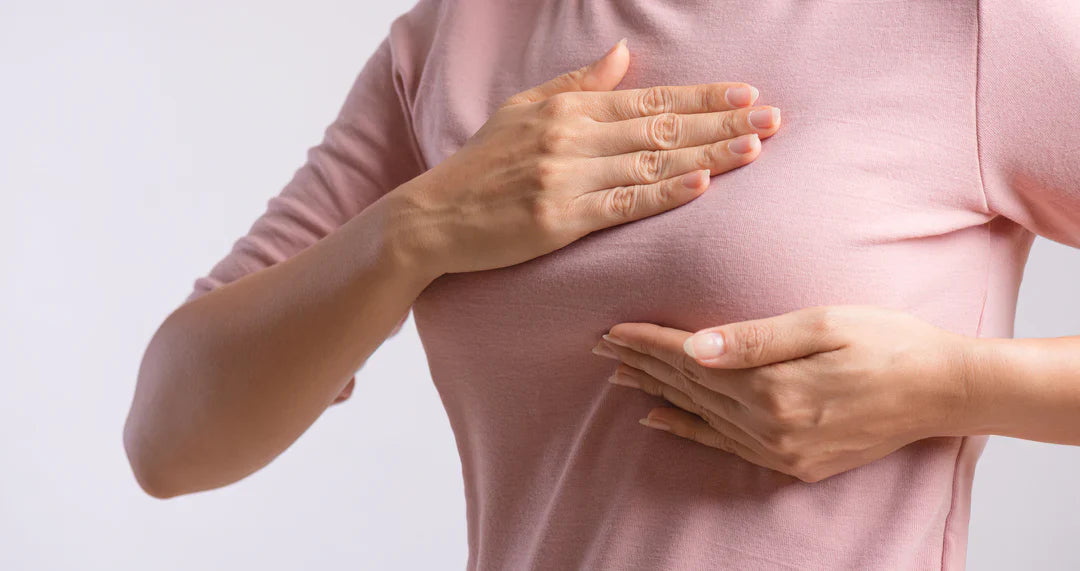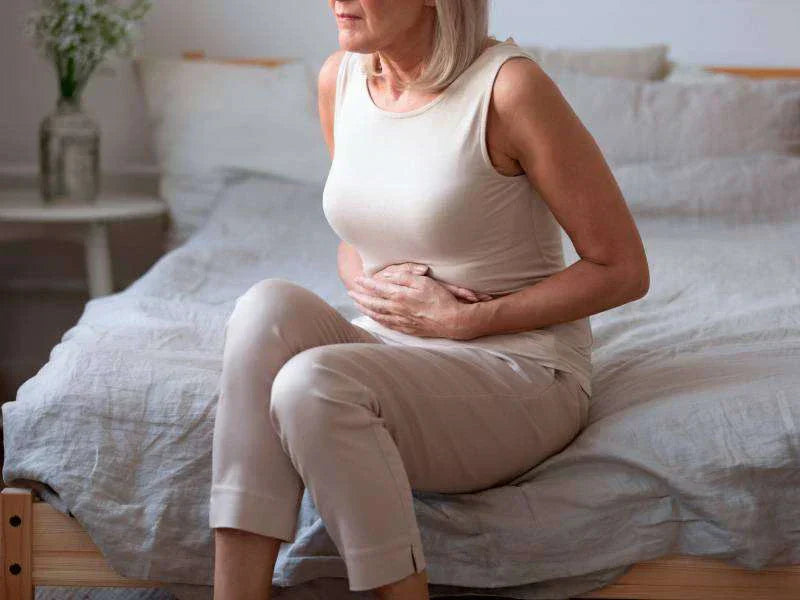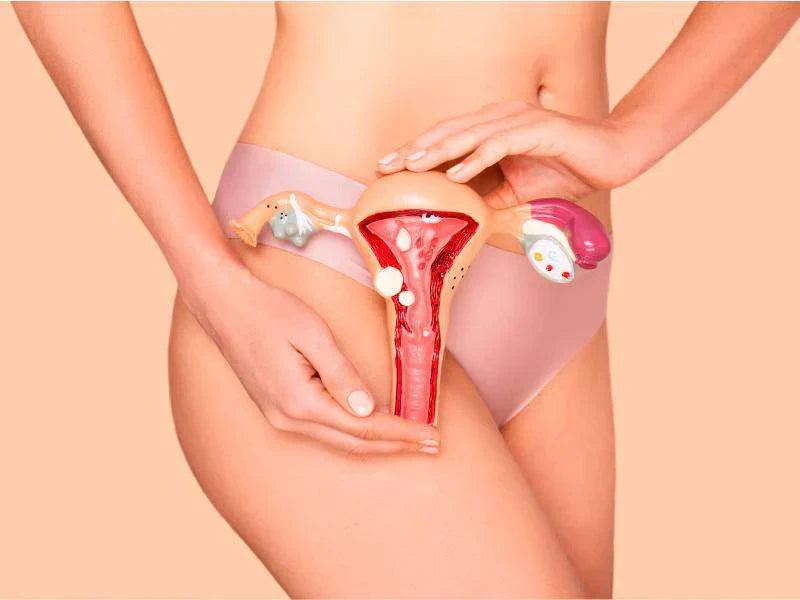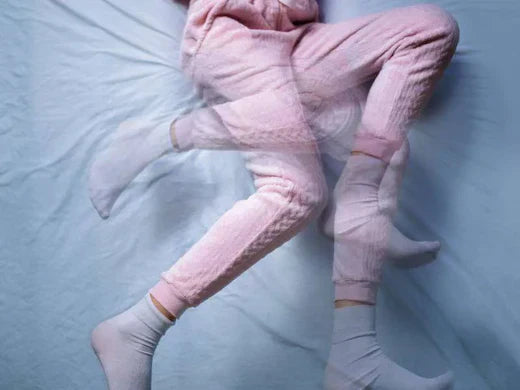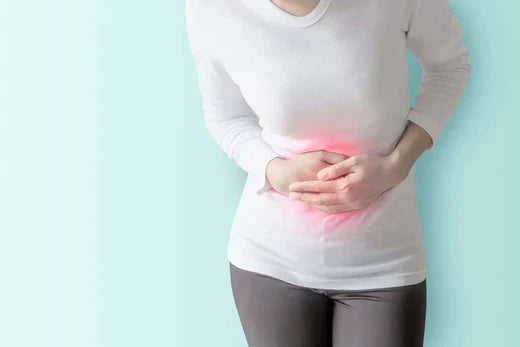Breasts change a lot throughout a woman's life. This is caused by several factors, for example, pregnancy, breastfeeding, hormonal variations in the menstrual cycle and menopause, weight loss or gain, and ageing. At some point different breast lumps may appear, so it is important to be informed and know what to expect (1).
Why does menopause cause breast changes?
From the perimenopause onwards, alterations in the size and shape of your breasts may begin. This is usually due to reduced estrogen levels. There are three ways in which menopause often causes changes in your breasts (2):
-
Tenderness or soreness: this is due to fluid build-up, which can cause them to feel swollen.
-
Changes in size: the milk ducts close and the tissue shrinks. As a result, you may notice that your breasts are not as firm as they used to be.
-
Lumpiness: caused by age and hormonal changes.
-
The degree to which these changes occur will depend a lot on your eating habits, skin care and exercise (2).
What are breast lumps and what are their possible causes?

A lump is a protuberance, swelling or mass different to breast tissue. They are often caused by something harmless, such as a growth of non-cancerous tissue or a build-up of fluid. In that sense, here is a list of the main causes (3,4).
Fibroadenoma lumps in the breast
It is a very common non-cancerous condition. Besides, it can occur in women of any age. It feels like bulges sensitive to touch and move easily under the skin. They usually do not cause pain, but sometimes they do (5).
Breast lumps caused by breast cysts
In this case, they are benign and one or more may develop in one or both breasts. They are often caused by age-related changes. Moreover, they can be soft or hard and vary in size. Regarding their shape, they are oval or round and develop rapidly in any part of the breast. In addition, they are not usually painful (6).
Intraductal papilloma breast lumps
They are a type of benign wart-like tumour that develops in the ducts of the breast. Their characteristics are (4):
-
A round or oval lump under the nipple
-
Clear or bloody discharge
Fat necrosis
It occurs when the fat in the breast does not get enough oxygen, so the tissue dies. In this case, it can occur after breast surgery, stroke, biopsy, or medical treatments (such as radiation). Additionally, it may be accompanied by (4):
-
Lumps caused by the presence of oil cysts
-
Change in the shape of the breasts
-
Pain
Breast lumps as consequence of lipomas
They are benign fatty tumors. Also, they usually feel soft, move under the skin and, in most cases, do not cause pain (4).
Breast cancer
It is the most common type of cancer in the UK. In fact, most women are over 50 at the time of diagnosis. However, younger women and men can also get the disease. Besides, in terms of symptoms, it is important to demystify the belief that hair loss is a sign of cancer. Despite, this is often a complication of treatment. The true signs and symptoms are (7):
-
Changes in the size or shape of one or both breasts.
-
Nipple discharge, sometimes bloody.
-
Dimpling of the skin or dry skin.
-
Changes in the appearance of the nipple.
Tests to determine the cause of breast lumps
To be sure of the cause, your doctor will probably order one or several of the following tests (8):
-
Mammography: takes X-ray images of the breast from different angles to detect a possible abnormality.
-
Ultrasound: Takes a picture of breast tissue to determine whether a lump is solid, or fluid filled.
-
MRI (magnetic resonance imaging): Allows to see images that are not seen with mammography or breast ultrasound.
-
Ductography (also called galactography): Takes pictures of the breast ducts.
-
Biopsy: A sample of breast tissue or an entire lump is removed. In that sense, this is the most accurate way to distinguish a malignant disease from a disease of benign origin.
-
Breast self-examination: this is a check-up you can do to look for changes in your breast tissue. Always do it on the same day every month. This is the most effective way to detect lumps before other symptoms or signs appear (9).
In conclusion, although breast lumps usually have non-cancerous causes, you should see your doctor immediately. Then, he or she will order the appropriate tests and give you the best treatment. So, even if the cause is malignant, there is a better chance of recovery if you detect it early.
Referencias Bibliográficas
-
The Royal Women’s Hospital. Hospital TRW. Normal changes in your breasts [Internet]. Available from: https://www.thewomens.org.au/health-information/breast-health/normal-changes-in-your-breasts#:~:text=As%20women%20age%2C%20their%20milk
-
WebMD. How Menopause Affects Your Breasts [Internet]. 2022. Available from: https://www.webmd.com/menopause/guide/breasts-menopause
-
NHS.uk. Breast lumps [Internet]. 2020. Available from: https://www.nhs.uk/conditions/breast-lump/#:~:text=Causes%20of%20breast%20lumps&text=They
-
Medical News Today. Breast lumps: Causes, types, checking, and treatment [Internet]. 2022. Available from: https://www.medicalnewstoday.com/articles/186084
-
Breast Cancer Now. Find out about fibroadenoma. 2019 [Internet]. Available from: https://breastcancernow.org/information-support/have-i-got-breast-cancer/benign-breast-conditions/fibroadenoma
-
Breast Cancer Now. Learn all about breast cysts [Internet]. 2019. Available from: https://breastcancernow.org/information-support/have-i-got-breast-cancer/breast-pain-other-benign-conditions/breast-cysts
-
NHS. Breast cancer in women [Internet]. 2019. Available from: https://www.nhs.uk/conditions/breast-cancer/
-
National Cancer Institute. Breast Changes and Conditions [Internet]. 2019. Available from: https://www.cancer.gov/types/breast/breast-changes
-
Medlineplus. Breast self-exam [Internet]. 2022. Available from: https://medlineplus.gov/ency/article/001993.htm
You May Also Like

JOIN US AND GET 10% OFF
Sign up to our newsletter to access free resources, advice and support.



